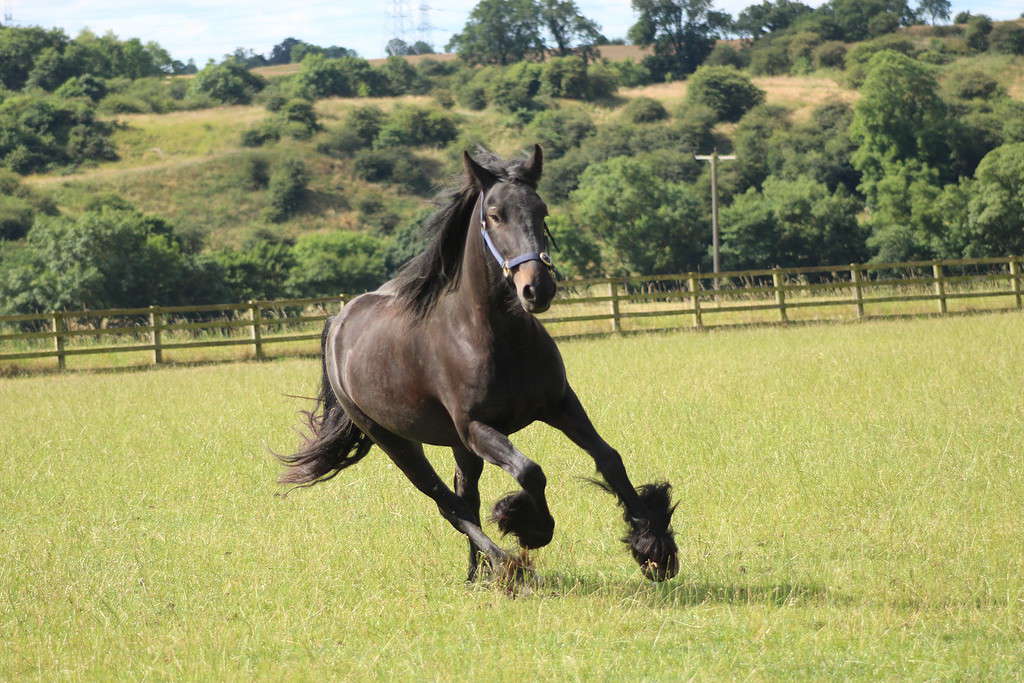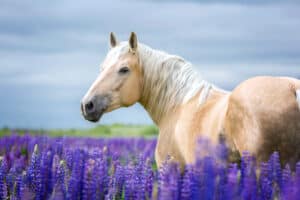It’s not as easy as you think to define “pony breeds.” Individual horses that stand below 14.2 hands high are considered ponies. But the true distinction between breeds of horses and ponies is the average height across the breeds — over and under 14.2 hands high, respectively.
For example, Haflingers and Icelandics are often pony-sized but are both registered horse breeds. Then you have some of the smallest breeds in the world like the Falabella and Caspian… those have to be ponies. Right? Wrong. Those are miniature horse breeds! Completely different.
To help make it all less confusing, here is an alphabetic list of the most popular pony breeds from around the world. This is not comprehensive, but rather a compilation of the most commonly known or seen in the show ring today.
1. American Quarter Pony

If you need a small breed to ride, the Quarter Pony is a great option thanks to its bloodlines.
©Jaco Wiid/Shutterstock.com
If you like the American Quarter Horse, you’ll love the Quarter Pony. This registered breed measures close to 13.2 hands high on average. Their sweet temperament and small stature make them a perfect children’s mount.
2. American Walking Pony

The American Walking Pony is a cross between Tennessee Walking Horses and Welsh Ponies.
©Teri and Jackie Soares/Shutterstock.com
Standing no more than 14 hands high, the American Walking Pony combines the best physical traits of two popular breeds. You get a more compact gaited horse by breeding the Tennessee Walking Horse and the Welsh Pony. This results in a smooth ride for adults and children alike.
3. Australian Pony

British breeds influenced the Australian Pony’s bloodline.
©Eva Eisenlohr/iStock via Getty Images
This small Australian breed stands between 11 and 14 hands high. A common competitor in the show ring, this pony is docile yet eager with excellent conformation. That’s because of the Welsh Pony and Arabian horse influences!
4. British Riding Pony
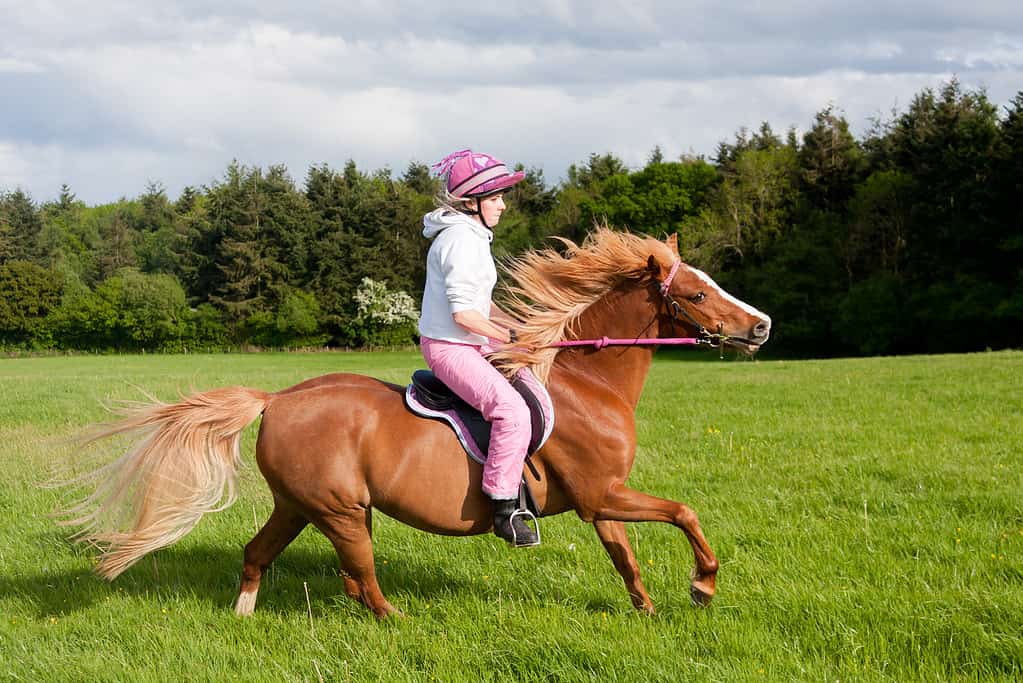
This popular UK breed is a mix of Thoroughbred, Arabian, and native breeds like the Welsh Mountain Pony.
©Groomes Photography/iStock via Getty Images
This breed, established in the late 1800s, has influenced many sport pony bloodlines worldwide. It has a refined head, expressive eyes, and a stature of substance without being too stocky. The British Riding Pony is one of the most popular pony breeds in the UK show ring today.
5. Burmese Pony
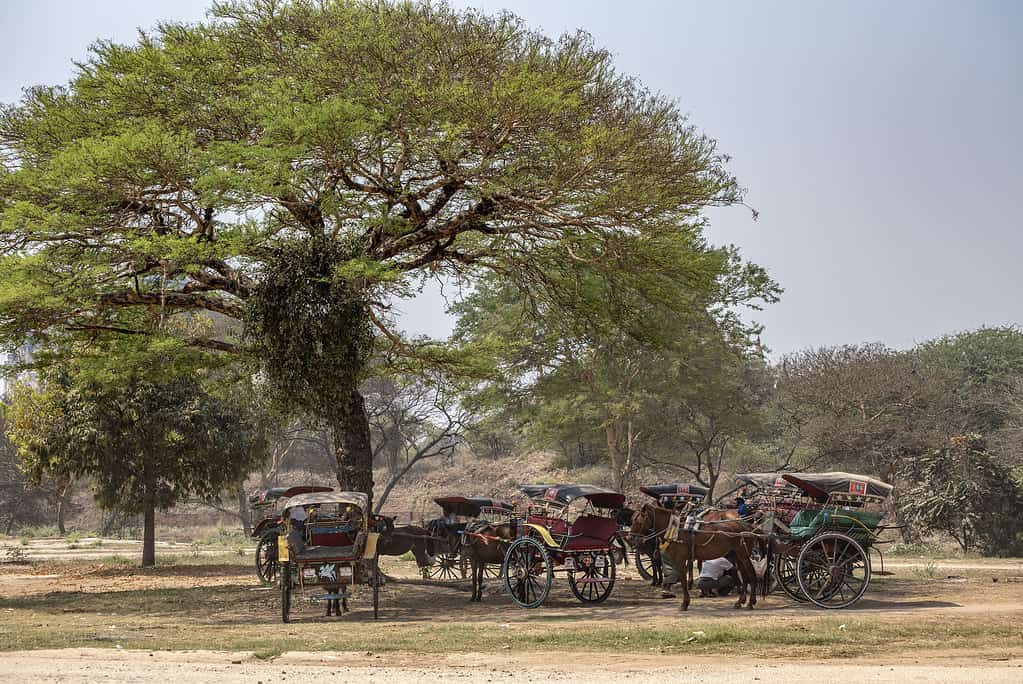
This pony breed from Burma typically pulls carts as a local transportation method.
©PDerrett/iStock via Getty Images
Two breeds live in Burma — the Burmese Pony and the Shan Horse. They are similar in all but height as they both traverse the rugged mountain terrain.
6. Connemara
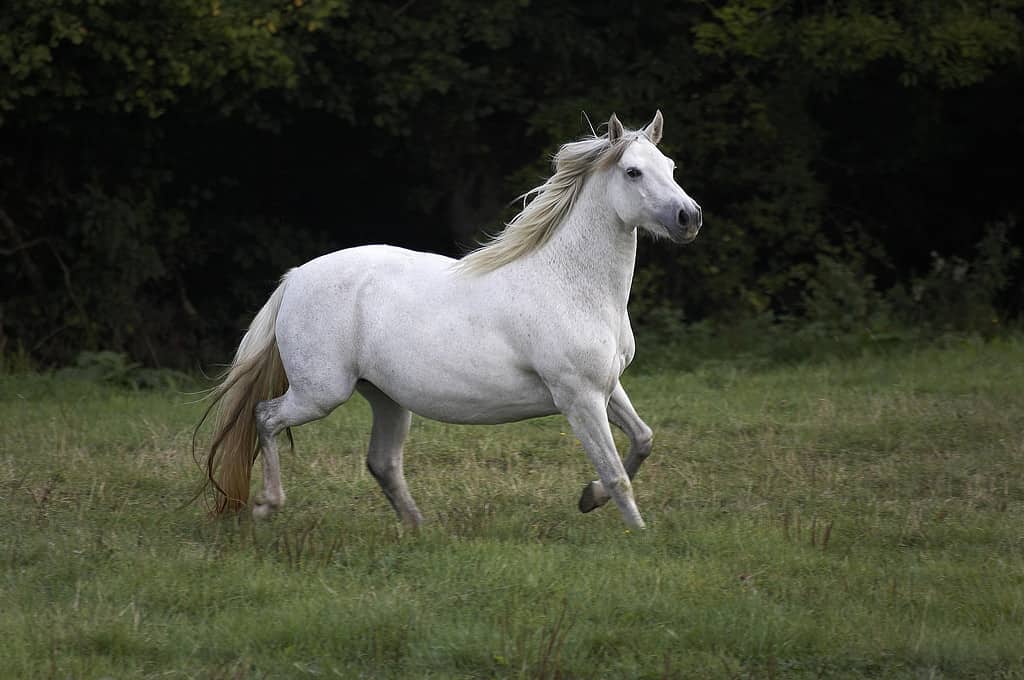
A proudly Irish breed, the Connemara Pony is primarily dun or gray.
©slowmotiongli/iStock via Getty Images
Connemaras are a gentle, hardy breed from the countryside of Ireland. It’s well-known as a versatile sports pony with a knack for jumping. This breed also has a kind enough temperament for children to ride it. This is an important reminder that just because a horse is small, doesn’t mean it’s safe!
7. Dales Pony
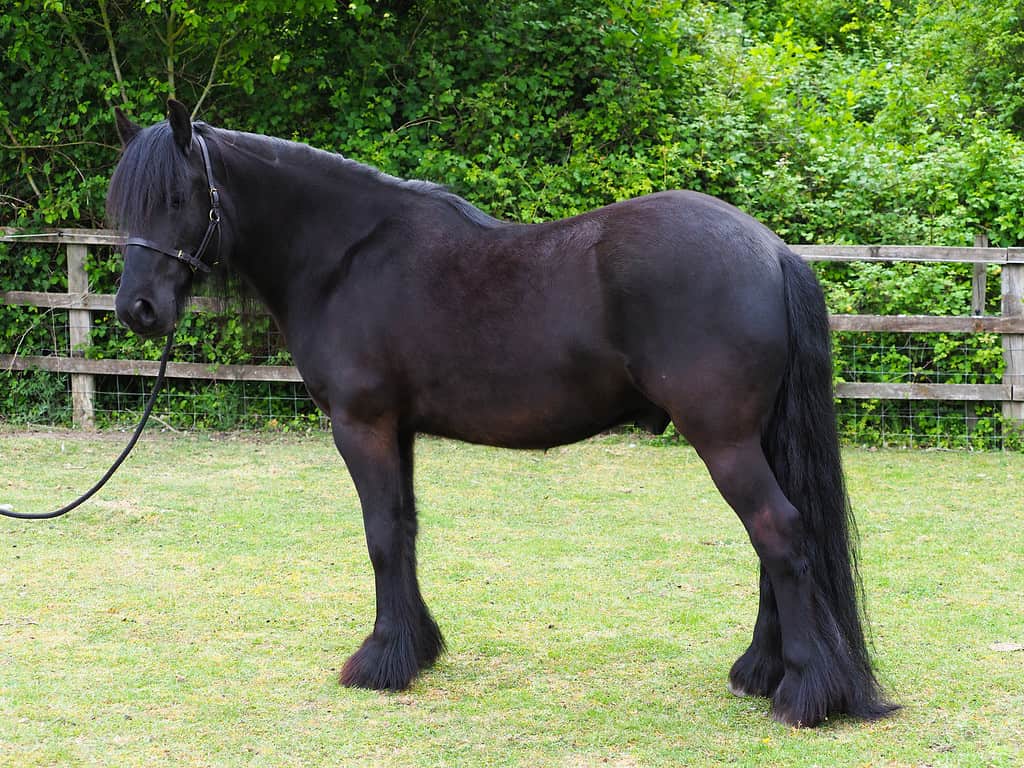
One of the more well-known, reliable, and sturdy pony breeds is the Dales Pony.
©nigelb10/iStock via Getty Images
The Dales Pony hails from England, originally bred as a pack horse. The breed is surefooted, strong, and steady under pressure. At 14.2 hands high max, they make the ideal mount for a child or small adult in the show ring. They excel at driving and harness racing but also make reliable pleasure-riding mounts.
8. Dartmoor Pony
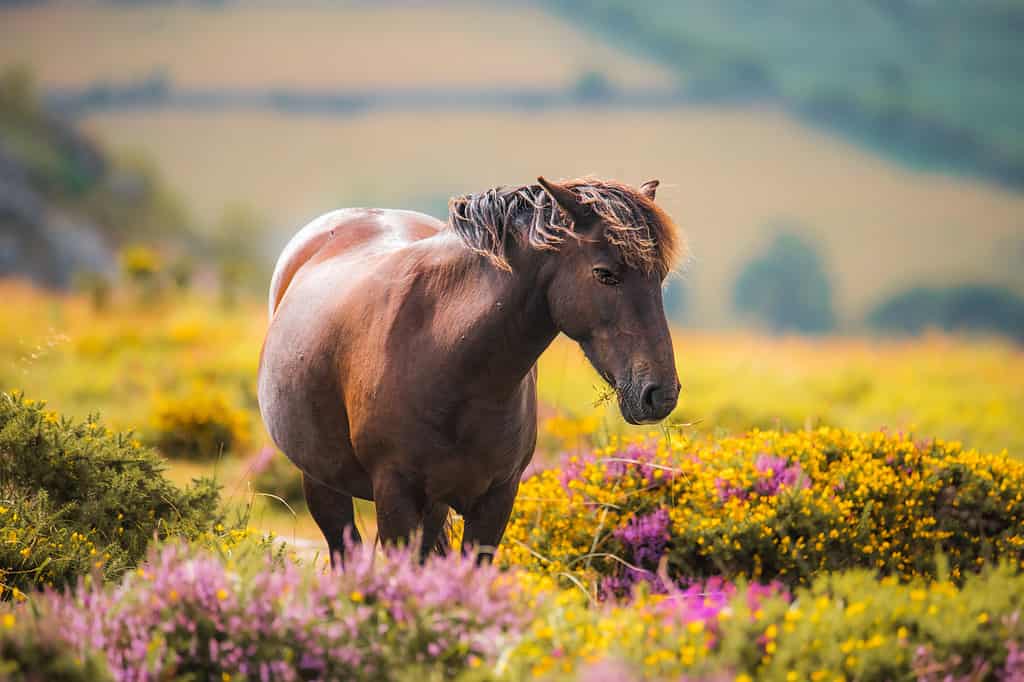
Despite its small size, the Dartmoor Pony is a beautiful mover.
©Jack Brennan/iStock via Getty Images
Another one of the many English show pony breeds is the Dartmoor. Similar to the Dales Pony, Dartmoors are willing and hardy. However, it might surprise you to know they max out at 12.2 hands high. Despite their small stature, this breed is a stylish mover, making them formidable competitors in jumping, dressage, and driving competitions.
9. Eriskay Pony
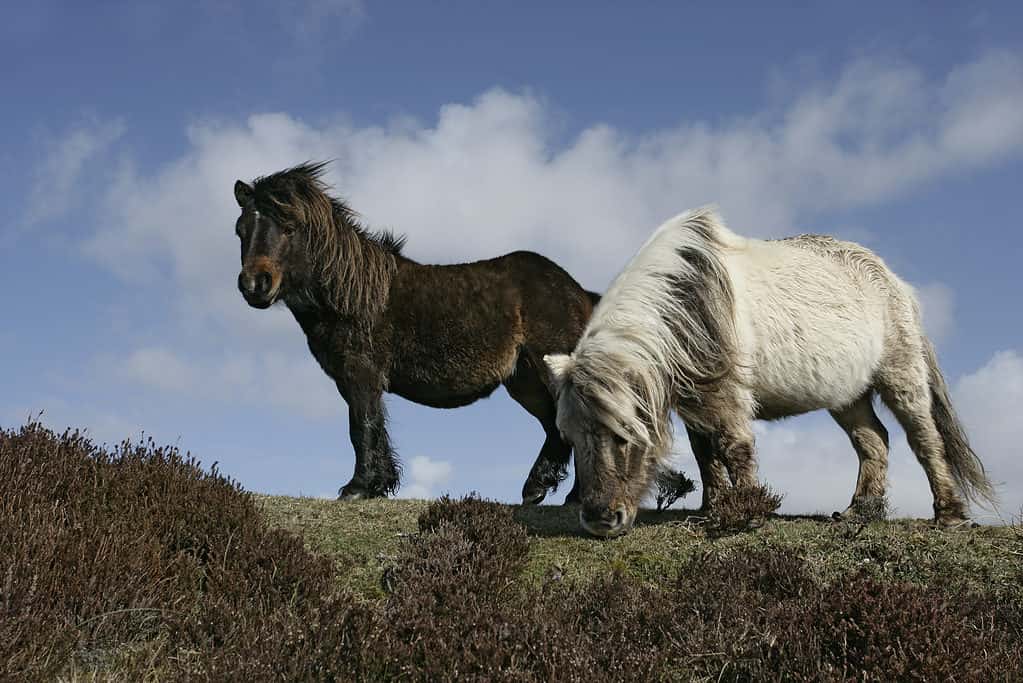
This surefooted pony breed originates from Scotland.
©Erni/Shutterstock.com
The most common coloring of an Eriskay Pony is gray. They have a stocky, petite build, standing at less than 13 hands high. An identifying feature of this breed of pony is their feathered fetlocks. As a working breed from the mountains, they have a willing attitude and are characteristically adaptable.
10. Exmoor Pony

Alert, spirited, and cheeky, the Exmoor might be a pony breed but they aren’t always easy for children to handle.
©Wildpix productions/Shutterstock.com
One of the most well-known pony breeds today is the Exmoor. Originally used for herding livestock on the moors they lived on, they are a capable breed that can excel in jumping, dressage, and driving. In fact, they’re the oldest (and purist) British native breed!
11. Faroe Pony

Wild Faroe ponies can be found on the Faeroe Islands.
©Wirestock/iStock via Getty Images
The Faeroe Islands rest in the Atlantic Ocean between Iceland and the Shetland Islands. This is where the Faroe Pony roams wild! Typically seen with bay or brown coloring, they are hardy and adaptable animals due to their remote location.
12. Fell Pony
Averaging just 12 hands high, the Fell Pony is a surprisingly versatile breed. Their ground-covering trot won races and their surefootedness won hearts. This is a breed of pony you can trust to get you where you need to go safely. They are smaller and lighter than a Dales Pony, so make sure you’re the right size before you ride them!
13. Galician Pony
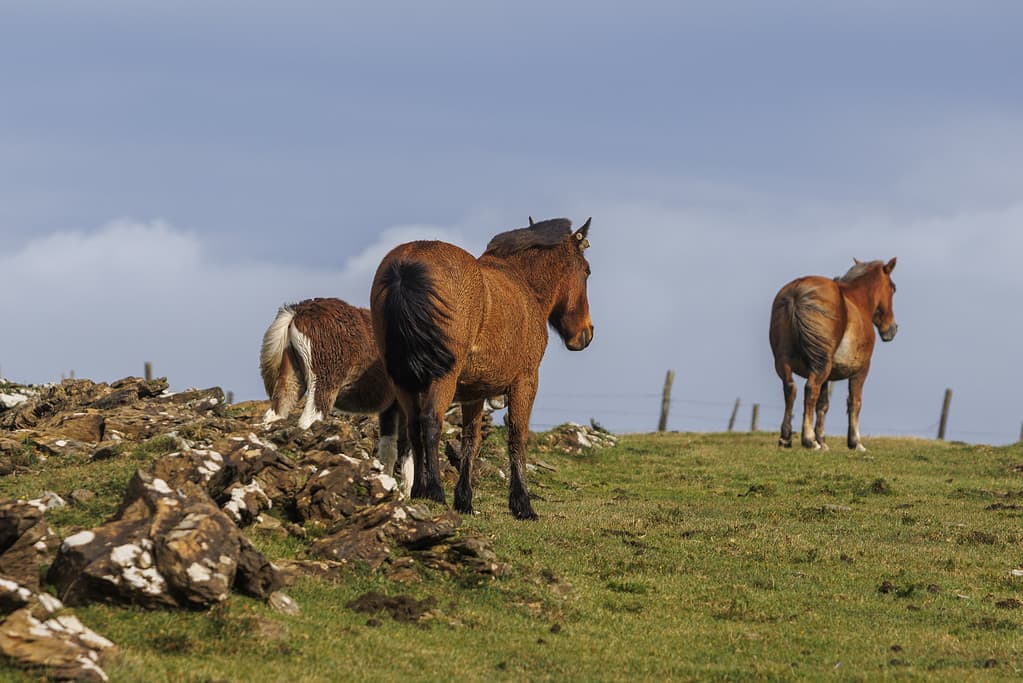
Wild Galician ponies graze in the mountains of Galicia, Spain.
©Imaxe Press/iStock via Getty Images
If you haven’t heard of the wild ponies of Galicia, Spain, now you have! Similar to how the Bureau of Land Management rounds up Mustang horses to control the population in the Western United States, a local festival called the “curros” brings the Galician ponies down the mountain each year. They sell them — for riding purposes or meat production — and set the rest free.
14. Hackney

A performer at heart with a heart of gold, the Hackey is a wonderful choice for competitions and children.
©Kymberlee Andersen/iStock via Getty Images
If you want a pony that’s both great with children and a star in the show ring, you want a Hackney. Their expressive presence and willing attitude have created a fantastic pleasure driving pony. Just don’t confuse this breed with the Hackney horse, which stands over 14.2 hands high!
15. Highland Pony
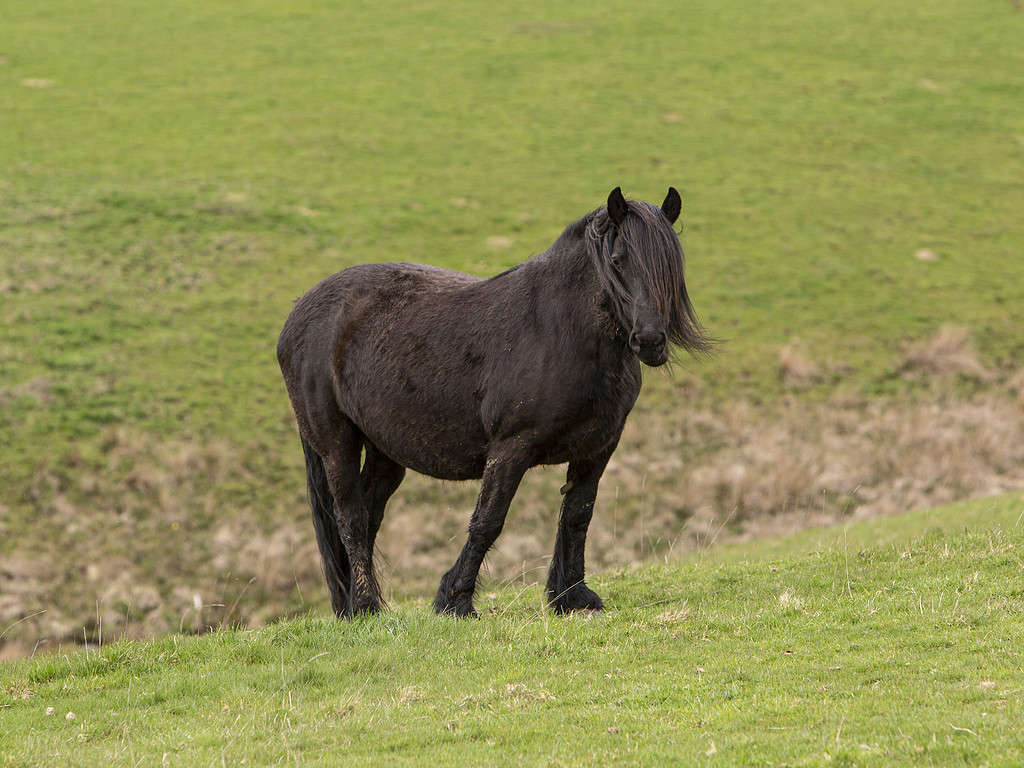
The Highland Pony coloring ranges from dun and gray to brown or black. Chestnut isn’t as common.
©Sonya Kate Wilson/iStock via Getty Images
As you can see by now, most of the pony breeds on our list are both small enough to be safe for a child to ride and sturdy enough to carry a petite adult. The Highland Pony is no exception. This breed originates from Scotland and is on the taller end of pony height — between 13 and 14.2 hands high.
16. Kerry Bog Pony
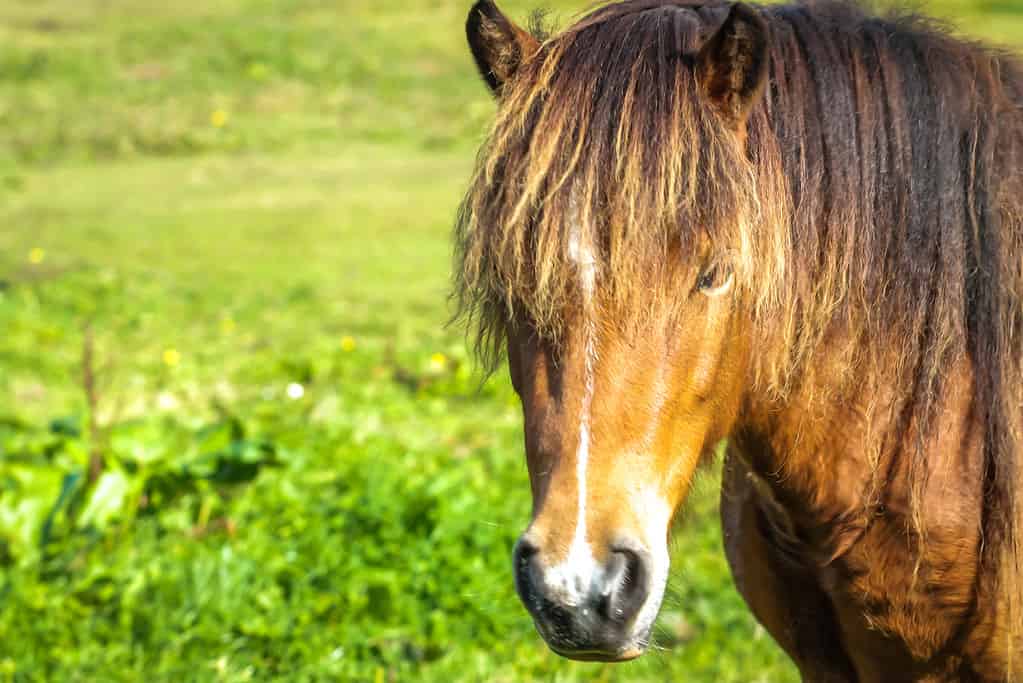
Kerry, Ireland is home to the Kerry Bog Pony.
©DACowley/iStock via Getty Images
A distinctly Irish pony breed, the Kerry Bog Pony only stands about 10 to 11 hands high. However, they are small and mighty. This breed was originally used as a pack animal and to haul carts of turf from the bogs! Today, the ponies participate in conservation grazing more than competitions.
17. New Forest Pony
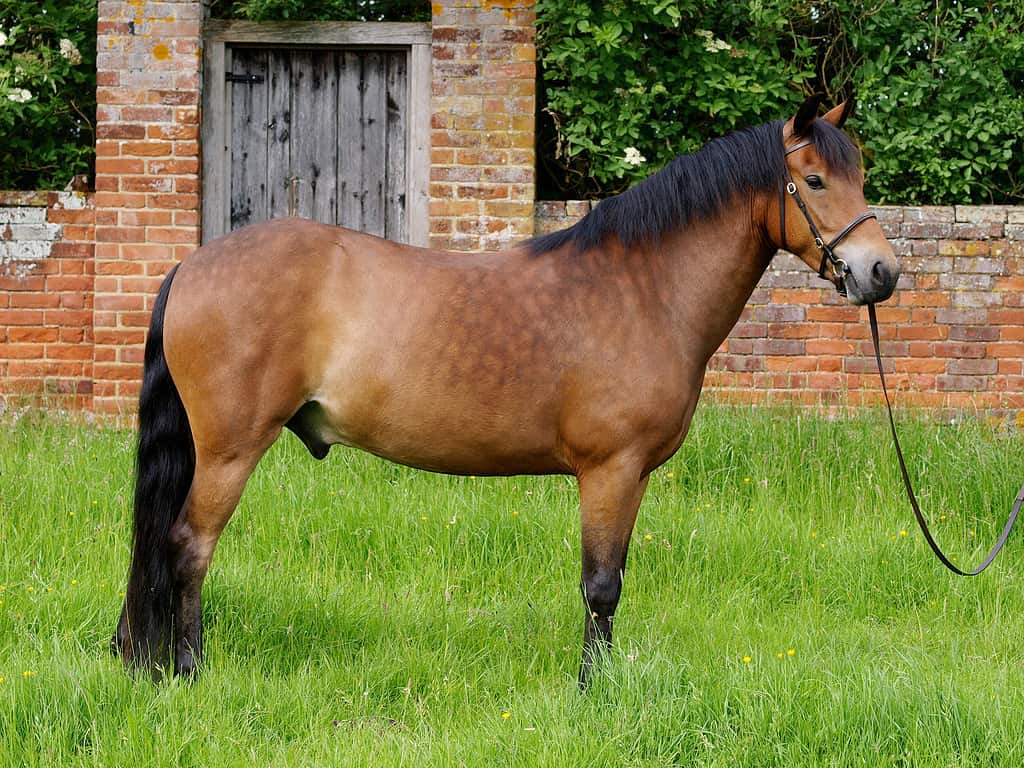
A New Forest Pony is a perfect children’s mount.
©nigelb10/iStock via Getty Images
One look at the New Forest Pony and you can tell they are a friendly breed. UK-bred, this pony is as willing as it is capable. Its height, which is usually at the taller end of pony-sized, makes it a perfect mount for young riders and petite adults.
18. Norwegian Fjord
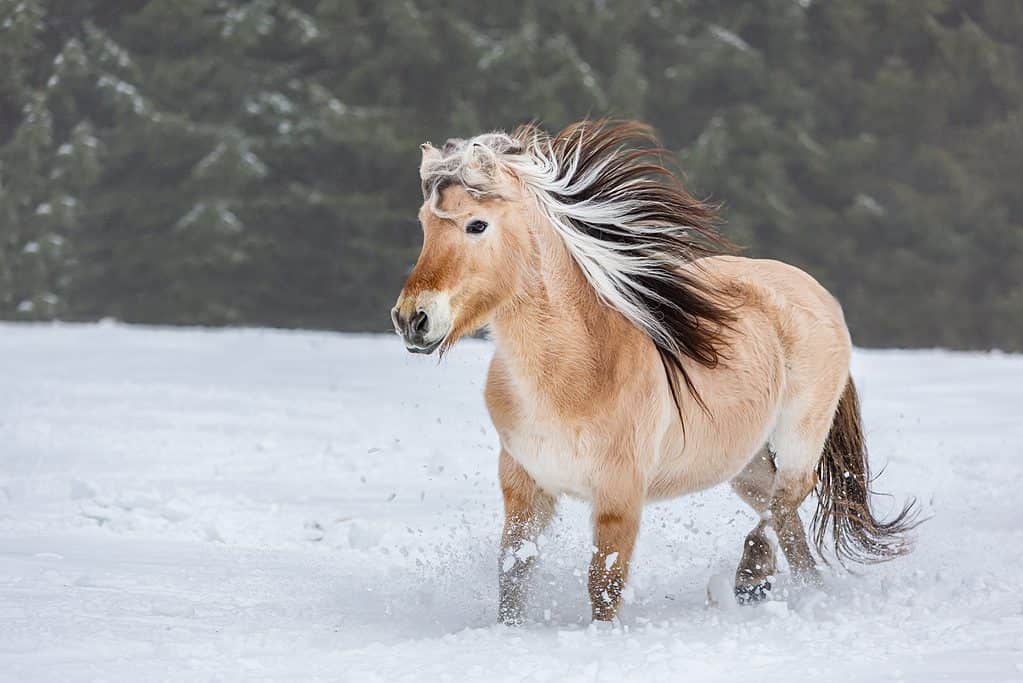
The Norwegian Fjord is an ancient breed with ancestry tracing back over 4,000 years.
©Annabell Gsoedl/Shutterstock.com
Rivaling the Exmoor Pony as one of the world’s oldest breeds is the Norwegian Fjord. Always dun-colored with a black dorsal stripe down its spine, the Fjord is downright stunning and just the right size. This pony is naturally curious and astutely observant, which makes it a great children’s mount.
19. Pony of the Americas
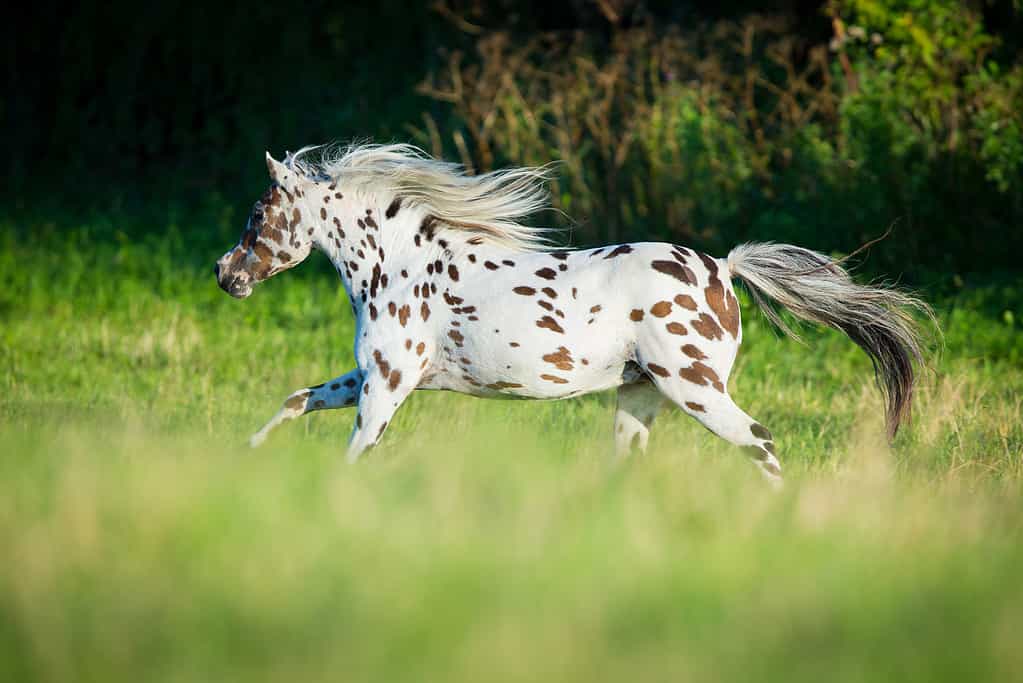
It’s common to mix up an Appaloosa and a Pony of the Americas.
©Alexia_Khrushcheva/iStock via Getty Images
This breed of pony shares similarities with the Shetland Pony, Appaloosa, and Arabian horse. That’s because the stallion that started the Pony of the Americas bloodline was a cross of those three breeds! They were bred for Western riding and do well running barrels due to their small stature and athletic abilities.
20. Shetland Pony
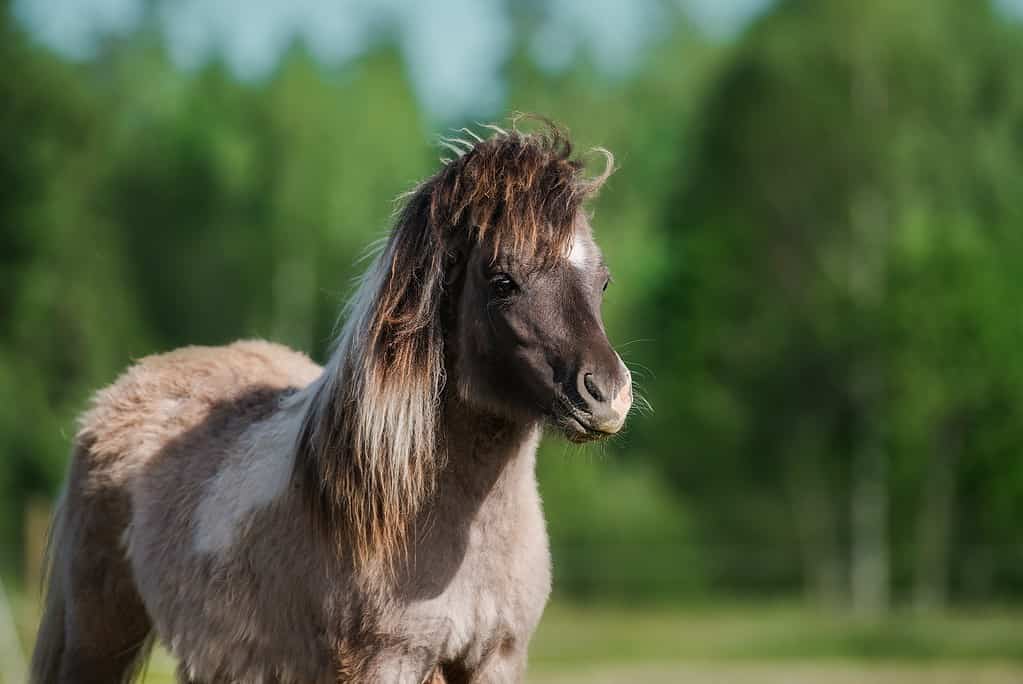
Spunky, small, and stubborn are all adjectives that describe the Shetland Pony.
©Rita_Kochmarjova/Shutterstock.com
The most infamous of all pony breeds is the Shetland. When you think of a pony, you probably think of this stout, spunky, and sturdy breed. They are often young riders’ lesson horses, used for jumping, pleasure riding, and even racing. This breed shows us that some of the most powerful ponies often come in puny packages.
21. Timor Pony

Australia, New Zealand, the Netherlands… the Timor Pony’s exact origins are unclear but still debated.
©Reni Purnama Sari/iStock via Getty Images
This pony breed is shrouded in mystery. The exact origins of the Timor Pony are unknown, but we do know it’s a strong and willing breed. Standing between 10 to 12 hands high, these ponies are used for riding, driving, and light farm work.
22. Welara Pony

What do you get when you cross an Arabian Horse with a Welsh Pony? This balanced breed.
©Alexia Khruscheva/iStock via Getty Images
The Welara is a common pony breed that originated in 1981 by crossing an Arabian horse with a Welsh Pony. You still get the spirit and expressiveness of the Arabian but with a more gentle disposition. These breeds of ponies are also incredibly versatile, excelling in a wide array of disciplines like eventing.
23. Welsh Pony
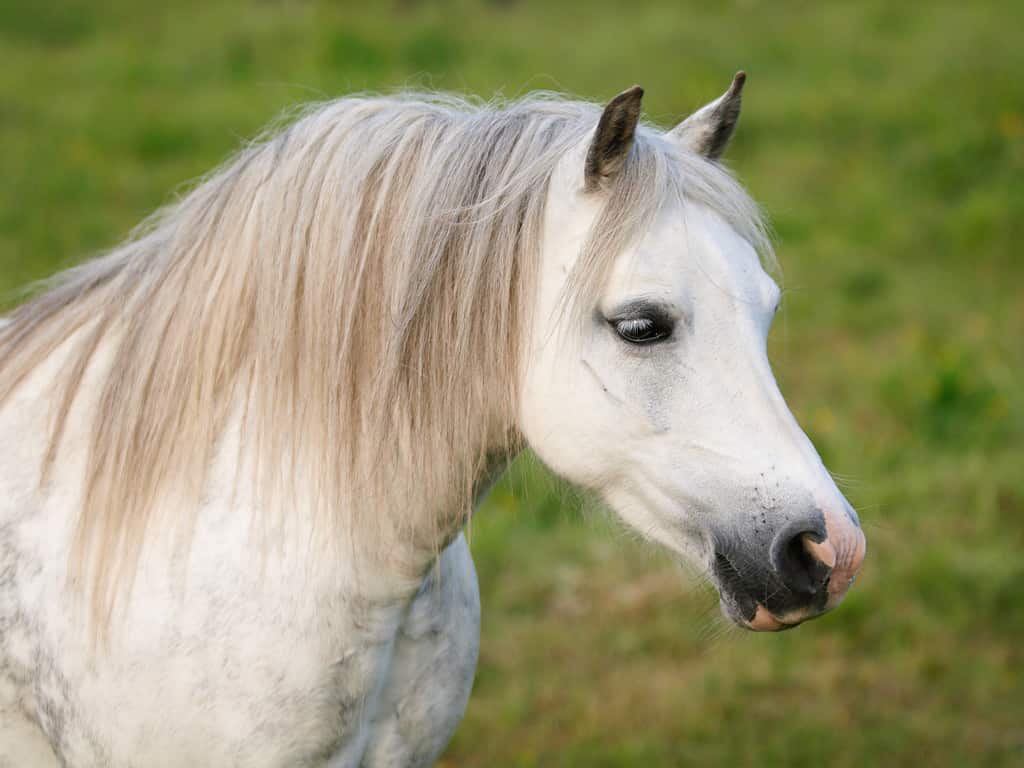
A Welsh Pony is a common sight in the show ring.
©nigelb10/iStock via Getty Images
Welsh Ponies such as Welsh Mountain Ponies and Welsh Cobs are among the most exciting and beloved pony breeds to own and ride today. They are often a child’s first pony and make excellent competition mounts due to their dynamic personality and flashy movement. This breed is categorized into four groups based on height — section A, B, C, and D. Section D cob ponies don’t technically classify as ponies due to exceeding 14.2 hands high.
Did you learn something new about some of the most popular pony breeds? Which one is your favorite?
The photo featured at the top of this post is © BitsAndSplits/iStock via Getty Images
Thank you for reading! Have some feedback for us? Contact the AZ Animals editorial team.



